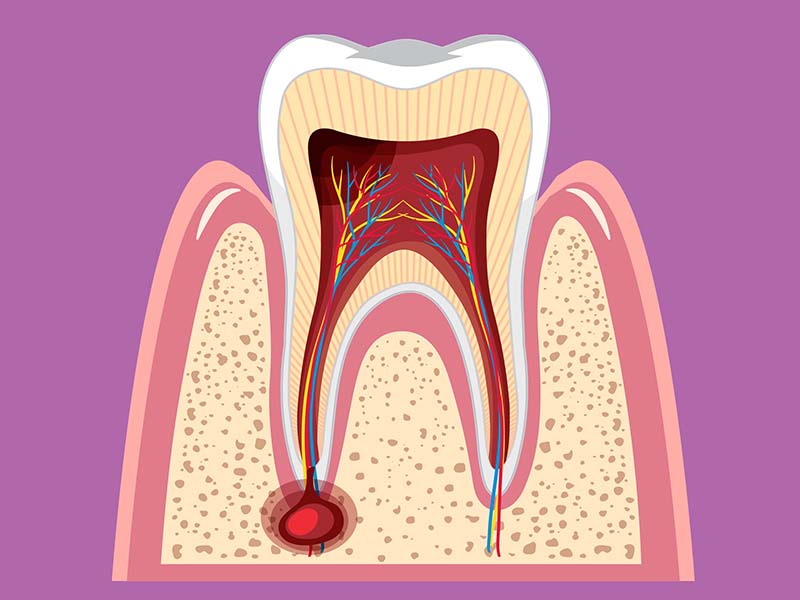Periodontitis treatment
When do we speak of “periodontitis”?
Periodontitis is an inflammatory disease of the tissue surrounding the teeth, the so-called periodontium. After the age of 45, periodontitis is the most common cause of tooth loss. The onset of periodontitis is initially painless for the person concerned, but is often associated with an increased tendency to bleed, swelling of the gums and bad breath. Gum pockets can develop unnoticed due to the breakdown of the jawbone. The result is a loss of tooth anchorage, which can lead to tooth loosening and later to tooth loss. In many cases, the process only progresses slowly (chronic progression), but in some cases there is a rapidly progressive loss of tissue (aggressive progression) even at a young age. Untreated periodontitis is also considered a health risk factor – particularly for diabetes and cardiovascular disease – and can cause premature births.
Special bacteria in the gum pockets are involved in the periodontal destruction process. They are considered to be inflammation triggers, but individual defense mechanisms also determine the course of the disease. Smokers are at a particularly high risk of developing periodontitis.

Symptoms of periodontitis
Periodontitis is usually painless at first. The following signs may indicate a disease of the periodontium:
- Bleeding gums
- Swelling and redness of the gums
- Gum recession
- Unpleasant bad breath
- Drainage of secretions from the gum pockets
- Loosened teeth
- Sensitive tooth necks
What treatment steps are required?
Periodontitis can be easily detected during a dental check-up with the help of the periodontal screening test (PSI). Various examinations in the mouth (e.g. bleeding test, periodontal status) and x-rays are used to determine the severity and aggressiveness of the disease. Aggressive forms of the disease can be better diagnosed through additional microbiological determination of pocket bacteria.
Periodontal treatment restores the tissue around the tooth root to an inflammation-free state, thereby slowing down the progressive breakdown of the periodontium. The so-called pre-treatment with detailed oral hygiene instruction and professional cleaning of the teeth often already significantly reduces the degree of inflammation of the gums. Intensive cleaning of the gum pockets under local anaesthetic using various instruments and devices (closed treatment) is the next treatment step and can already achieve the desired treatment result if the pocket depth is shallow.
A surgical procedure (open treatment) is required for teeth with very advanced periodontitis and deep pockets or for pockets that show signs of inflammation (bleeding, secretion) despite this treatment. By loosening the gingival margin, the pocket treatment is carried out under vision and diseased tissue is removed. In some cases, antibiotic treatment may be necessary at the same time.
How can the treatment result be secured?
Periodontitis is a chronic disease that requires lifelong care. It is important to have regular check-ups and maintain optimal oral hygiene at home. Interdental care with suitable aids is particularly important.
Regular follow-up treatment (recall) at the dental practice is just as important. Problem areas are identified at an early stage and professional teeth cleaning is carried out to stabilize the previously achieved treatment results.
Depending on the risk of disease, two to four appointments a year may be necessary to prevent the recurrence of periodontal disease.


